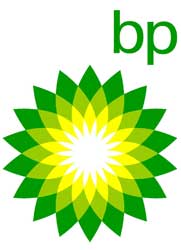Also expects $1 billion in Group-wide restructuring charges over coming year
 BP will present to investors its strategy and plans to the end of the decade and beyond for its Upstream oil and gas business.
BP will present to investors its strategy and plans to the end of the decade and beyond for its Upstream oil and gas business.
The day-long presentation, led by BP's Upstream chief executive Lamar McKay, will provide an in-depth and detailed account of how BP is managing its Upstream business and its distinctive strategy for the long term. The presentation will also review the macro-environment and the context of recent developments in oil prices.
McKay and senior members of his upstream management team will share further insights into the depth and quality of the Group's resource base and investment portfolio, which underpin BP's long-term value proposition through the changes in the price environment.
"Although the current environment is challenging, BP is well-positioned to respond and manage our Upstream business for the long term," said Lamar McKay. "We expect to see growth from our conventional and deepwater assets and an increasing contribution from gas. And we also have a quality pipeline of opportunities that we believe are capable of extending underlying growth well beyond 2020. Our focus throughout will remain firmly on safe operations, execution efficiency and greater plant reliability."
BP also said that, as part of its wider ongoing Group-wide program to simplify across its Upstream and Downstream activities and corporate functions, it expects to incur non-operating restructuring charges of circa $1 billion in total over the next five quarters, including the current quarter. Details of these charges and further guidance on the program are expected to be given with each quarter's results.
Group Chief Executive Bob Dudley said: "We have already been working very hard over these past 18 months or so to right-size our organization as a result of completing more than $43 billion of divestments. We are clearly a more focused business now and, without diverting our attention from safety and reliability, our goal is to make BP even stronger and more competitive.
"The simplification work we have already done is serving us well as we face the tougher external environment. We continue to seek opportunities to eliminate duplication and stop unnecessary activity that is not fully aligned with the group's strategy."
As an integrated group, not all BP's businesses are equally exposed to the oil price. About one third of its Upstream projects around the world are operated under production sharing contracts and it is also investing in high quality gas projects which are typically less sensitive to oil price movements. Importantly, while BP approves projects at $80 a barrel, it also already tests each at $60 a barrel to understand the resilience of the portfolio at a range of prices. It will also continue to consider lower price sets as appropriate.
BP also has a strong balance sheet, with historically low gearing of 15% at the end of the third quarter of 2014, which provides time and flexibility to adjust to changes in the environment.
Across the Group, BP has said it will be looking to pare or re-phase capital expenditure without compromising safety or future growth. In October, BP told investors this could result in reductions of $1 billion to $2 billion in capital expenditure across the Group in 2015 against guidance of $24 billion to $26 billion laid out in March. This will be reviewed further as part of the 2015 plan, recognizing the current outlook for oil prices.
When oil prices fall, there is typically deflation in the industry as a whole. Together with its already greater focus on streamlining activity, this would be expected to further help BP align its cost base with its smaller footprint and reduced activity levels.
The Upstream team will today detail the business's track record of delivery as part of the Group's 10-point plan. Amongst the milestones, over the last three years, the Upstream has improved safety and reliability of operations; doubled exploration drilling activity; and rebuilt Gulf of Mexico production. It has also increased the rate of reinvestment; made $32 billion of divestments in the Upstream business alone; and, by year end, also expects to have delivered 15 new upstream projects with average operating cash margins double 2011 average.
Between now and 2020, the Upstream team's focus will be on delivery, through safe and reliable operations, strong execution in the existing base business, and the start-up of a suite of new projects which are expected to be capable of adding over 900,000 barrels of oil equivalent a day of net incremental production to BP's portfolio by 2020. BP will also be progressing opportunities expected to continue to drive underlying growth into the next decade as it builds out its well-established conventional and deepwater oil positions and a distinctive and material portfolio of gas options.


 BP
BP Pipeline corrosion is a challenging issue for oilfield operators. Growing global energy demand coupled with the relentless depletion of onshore and shallow water resources has driven the push towards the exploration of deepwater and unconventional fields. In many of these areas, sour gas is evident, a condition complicated by high-pressure, high-temperature (HPHT) environments which places severe demands on the corrosion resistance of infrastructure and equipment. Various methods to combat corrosion are utilized within the industry principally corrosion inhibitors and materials selection.
Pipeline corrosion is a challenging issue for oilfield operators. Growing global energy demand coupled with the relentless depletion of onshore and shallow water resources has driven the push towards the exploration of deepwater and unconventional fields. In many of these areas, sour gas is evident, a condition complicated by high-pressure, high-temperature (HPHT) environments which places severe demands on the corrosion resistance of infrastructure and equipment. Various methods to combat corrosion are utilized within the industry principally corrosion inhibitors and materials selection.